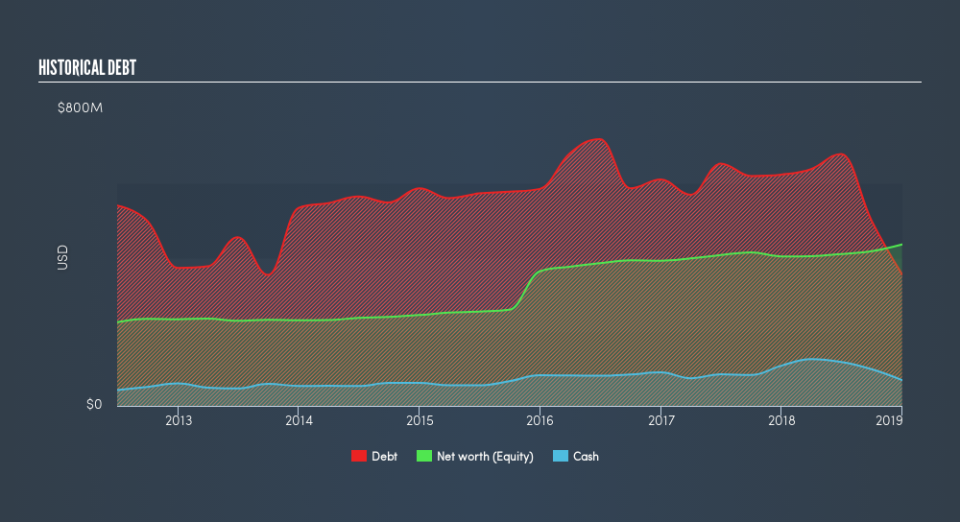What You Should Know About Camden National Corporation’s (NASDAQ:CAC) Liquidity

As a small-cap bank stock with a market capitalisation of US$665m, Camden National Corporation’s (NASDAQ:CAC) risk and profitability are largely determined by the underlying economic growth of the US regions in which it operates. A bank’s cash flow is directly impacted by economic growth as it is the main driver of deposit levels and demand for loans which it profits from. After the GFC, a set of reforms called Basel III was imposed in order to strengthen regulation, supervision and risk management in the banking sector. The Basel III reforms are aimed at banking regulations to improve financial institutions’ ability to absorb shocks caused by economic stress which could expose banks like Camden National to vulnerabilities. Unpredictable macro events such as political instability could weaken its financial position which is why it is important to understand how well the bank manages its risk levels. Low levels of leverage coupled with sufficient liquidity may place Camden National in a safe position in the face of adverse headwinds. We can measure this risk exposure by analysing three metrics for leverage and liquidity which I will take you through today.
View our latest analysis for Camden National
Is CAC's Leverage Level Appropriate?
Banks with low leverage are better positioned to weather adverse headwinds as they have less debt to pay off. A bank’s leverage may be thought of as the level of assets it owns compared to its own shareholders’ equity. Though banks are required to have a certain level of buffer to meet its capital requirements, Camden National’s leverage level of less than the suitable maximum level of 20x, at 9.86x, is considered to be very cautious and prudent. This means the bank exhibits very strong leverage management and is well-positioned to repay its debtors in the case of any adverse events since it has an appropriately high level of equity relative to the debt it has taken on to remain in business. If the bank needs to increase its debt levels to firm up its capital cushion, there is plenty of headroom to do so without deteriorating its financial position.
How Should We Measure CAC's Liquidity?


Since loans are relatively illiquid, we should know how much of the bank’s total assets are comprised of these loans. Normally, they should not exceed 70% of total assets, consistent with Camden National’s case with a ratio of 70%. This is a reasonable ratio and suggests that slightly over half of the bank’s total assets are tied up in the form of illiquid loans, striking an appropriate balance between liquidity and interest income.
What is CAC's Liquidity Discrepancy?
CAC profits by lending out its customers’ deposits as loans and charge an interest on the principle. These loans tend to be fixed term which means they cannot be readily realized, conversely, on the liability side, customer deposits must be paid in very short notice and on-demand. This mismatch between illiquid loans and liquid deposits poses a risk for the bank if unusual events occur and requires it to immediately repay its depositors. Compared to the appropriate industry loan to deposit level of 90%, Camden National’s ratio of over 87% is sensibly lower and within the safe margin, which positions the bank cautiously in terms of liquidity as it has not disproportionately lent out its deposits and has retained an apt level of deposits.
Next Steps:
Camden National ticks all the boxes for operational prudency in terms of liquidity and leverage. Investors often sideline these factors compared to other fundamentals, but they are equally important to consider as part of the investment thesis. The bank’s favourable liquidity and leverage position exposes it to less risk when it comes to repaying financial obligations, in particular, in the case of an adverse macro event. Keep in mind that a stock investment requires research on more than just its operational side. Below, I've compiled three key aspects you should further research:
Future Outlook: What are well-informed industry analysts predicting for CAC’s future growth? Take a look at our free research report of analyst consensus for CAC’s outlook.
Valuation: What is CAC worth today? Has the future growth potential already been factored into the price? The intrinsic value infographic in our free research report helps visualize whether CAC is currently mispriced by the market.
Other High-Performing Stocks: Are there other stocks that provide better prospects with proven track records? Explore our free list of these great stocks here.
We aim to bring you long-term focused research analysis driven by fundamental data. Note that our analysis may not factor in the latest price-sensitive company announcements or qualitative material.
If you spot an error that warrants correction, please contact the editor at editorial-team@simplywallst.com. This article by Simply Wall St is general in nature. It does not constitute a recommendation to buy or sell any stock, and does not take account of your objectives, or your financial situation. Simply Wall St has no position in the stocks mentioned. Thank you for reading.

